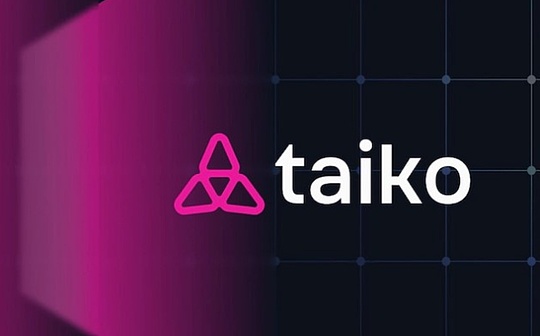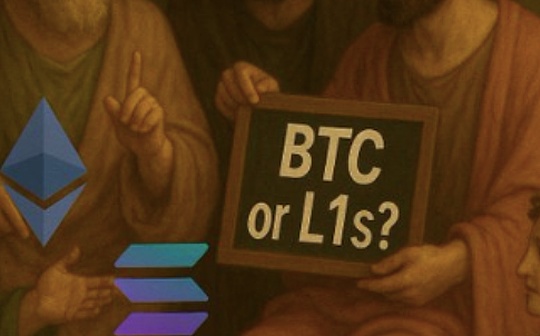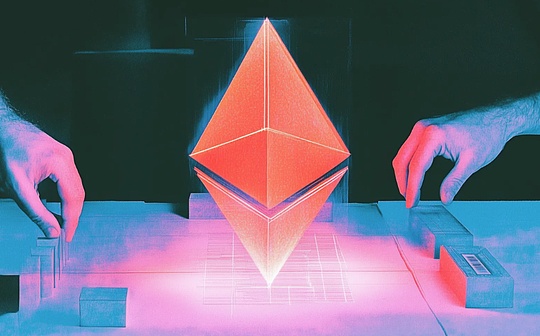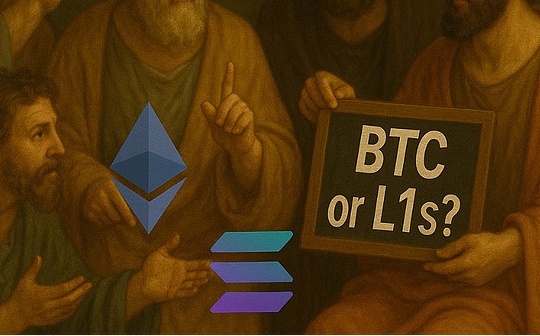
Author: lindabell Source: chainfeeds
On May 23, TAIKO announced the first round of airdrop query page, but set off a wave of debate on fairness in the community.Facing the response of its founder Daniel Wang, the community does not seem to pay for it.
At the same time, on May 25th, Vitalik Buterin, an Ethereum, as a block proposer on the first block of the TAIKO main network, and said at the block: “I am glad to see TAIKO as a BASED ROLLUPThe platform was launched. Ethereum benefited from using a variety of different methods of L2S. I appreciated that TAIKO was the first project to develop in this direction.
After the upgrade of Cancun, the Ethereum ecology put the attention point back to the L2 field again.Unlike other ROLLUP projects, TAIKO is developing plans based on Based Rollup, and attracts many VCs such as Sequoia China, Generation Ventures, Hashed, LightSpeed Faction, Token Bay Capital and Flow Traders.I can’t help but make people curious. Compared with other well -known ZK capacity projects, what is the special thing about Taiko?How will its capacity expansion scheme affect the L2 ecological pattern?
With these questions, the Chainfeeds dialogue taiko team discussed the content of TAIKO’s origin, vision, and Ethereum expansion scheme.
Excerpt:
-
TAIKO founder Daniel Wang hopes to expand Ethereum without sacrificing decentralization to achieve a situation of coexisting centralization and decentralization, so that DAPP can make decisions between the two options.
-
Contestable Rollup is abstracted to Zkrollup and Optimistic Rollup.In the future, if zero knowledge is cheap enough, it can be prepared to make ConteStable into pure zkrollups.
-
In the process of developing the SGX certificate, the TAIKO team gradually realized the importance of a stateless client, and firmly believed that the feasibility of generating zero -knowledge proof of zero -knowledge in ZKVM in the future.
-
TAIKO has been launched on the main network. The submission and proof of the blocks are not required, but there are still people in the contract.The TAIKO team plans to strive to transfer all the contract to TAIKO DAO for about one year on the main online online, and completely abandon the ownership and control of the network.
TAIKO Origin: Expand Ethereum without sacrificing decentralization
TAIKO founder Daniel Wang created the first Ethereum Ecological DEX protocol Loopring based on ZKroll in 2017.But LoPring’s architecture does not match the vision of Daniel.Daniel hopes to expand Ethereum without sacrificing decentralization to achieve the coexistence of centralized and decentralized second -level networks, so that decentralized applications can make more wise decisions between the two options.However, Loopring can only build a non -programmable two -layer network, lacks virtual machine structure, and in order to reduce costs, its output mechanism is also centralized.
Before the establishment of TAIKO, Daniel Wang and like -minded developers have discussed many times, mainly focusing on two directions: decentralized social networks or decentralized social networks, the infrastructure required for decentralized social networks “The second -level network that does not require permission”EssenceAfter careful consideration, everyone generally believes that the risk of getting involved in decentralized social networks is higher, and the second -level network that does not require permission has greater differentiated competition space, and TAIKO came into being.
TAIKO is a Type-1 ZKEVM, which provides the same operating code and functions as Ethereum, ensuring a high degree of compatibility with the existing Ethereum ecosystem.The TAIKO team emphasized that the initial design of TAIKO was the structure of Based Rollup, that is, the Ethereum verifier was eventually responsible for TAIKO’s block, which realized the decentralization of the proposal.As of now, TAIKO has more than 30,000 decentralized proposals and more than 14,000 decentralized verifications.In March of this year, TAIKO completed the $ 15 million round A financing led by LightSpeed Faction, Hashed, Generation Ventures, token Bay Capital, with a total financing amount of $ 37 million.In response to VC’s favor, the Taiko team said that they attach great importance to the strategic synergy of investment institutions and TAIKO.And the reason why TAIKO can become one of the world’s most crickets (over 1.07 million members) in the world in a short period of time, and attract hundreds of DAPPs to deploy, except for the Type-1 type and completely de-de-Sino-Chineseization architectureIn addition to the advantages, investors’ holdings are indispensable.
Ethereum Rollow Design framework exploration: BCR and BBR
One of the main differences between TAIKO and other Rollup is that it has chosen the Based Rollup mechanism and does not rely on centralized sorters, but relies on Ethereum verifications to sort transactions and blocks.Furthermore, Daniel Wang, co -founder of TAIKO, put forward the concept of “Based Contestable Rollup (BCR)” at the end of 2023.The concept introduced the ConteStable mechanism because the ZK-EVM code cannot never be wrong, and the TAIKO is decentralized and the fault tolerance rate is low, so you need to take a cautious attitude.
The TAIKO team also explained the main consideration of selecting ConteStable design:
-
First of all, Based Rollup does not need to be licensed, and must introduce “higher -level certificates” to solve the potential bugs in the software.This avoids the need for centralized networks to stop the network for data correction.Of course, with the increase in the running time of the TAIKO network, this error correction mechanism can gradually be removed.
-
Secondly, although SGX proves that it is thousands of times cheaper than zero -knowledge proof, it is not the most ideal or most centralized verification method.ConteStable design allows challenges when suspicion of SGX proof, and requires the use of higher -level certifications to re -verify blocks, while reducing costs while increasing the credibility of verification.
-
Finally, ConteStable Rollup has flexibility and scalability, which can be regarded as an abstraction of Zkrollup and Optimistic Rollup.For example, if zero knowledge proof is cheaper in the future, we can configure Contestable Rollup into pure zkrollups, or configure it to pure Optimistic Rollup according to the needs of the application to meet different verification needs.
Regarding the architecture of Based Contestable Rollup, Daniel Wang also conducted detailed overview in the article.BCR is a Rollup with controversial characteristics and uses Based.Under this design, anyone can make disputes on the status conversion in the block, but the TAIKO token must pay the dispute deposit, and a higher level of proof is required to resolve the dispute to verify the block.If the controversial victory is won, the controversial deposit can be recovered and 1/4 of the validity margin of the original proof.The new proofer will also obtain 1/4 of the validity margin of the original proof as a proof fee, and the remaining 1/2 will be confiscated.vice versa.It is worth noting that the multiple signatures in this mechanism jointly acted as high -level high -levels at the level in the first few years.As the highest level of proof, in this case, the state conversion is considered to be finalized and no longer allows further doubts.
>
In addition, TAIKO’s BCR architecture also has a core feature that allows each level to use its own certification system.The TAIKO team said that under the Contestable Rollup architecture, different levels of certifications can be constructed, such as the lowest cost Optimistic proof, and then SGX proof, and then ZKEVM or ZKVM proof.These different types of proof are the embodiment of the contestable concept, and can also combine these proofs as a hybrid multi -proof system. For example, “SGX+ZKVM” can be regarded as a more credible proof that only uses ZKVM to prove it.
As the first important milestone, TAIKO plans to test the actual operation of BCR on the Alpha-6 test network Katla, and then launched on the main network.After that, the TAIKO plan either upgrade the protocol to the Boosted Based Rollup (BBR), or launch an independent BBR second floor as the second important milestone.TAIKO said that if Ethereum’s native expansion capabilities are to be achieved, Boosted Based Rollup is a wise choice.By allowing L1 verifications to propose a new block for the entire network, it will enable Ethereum to obtain the expansion capacity of the box.For developers, BBR can size the transaction execution and storage.For users, the user experience will be improved because DAPP will be distributed on all L2.
>
Narrative upgrade: Turn to ZKVM?
Everyone is no stranger to ZKEVM, but EVM is not designed to run in zero -knowledge circuit. Therefore, in practice, implementing ZKEVM often needs to make some weighing.Unlike ZKEVM, ZKVM is a virtual machine implemented as a zero -knowledge proof system circuit.Its advantages include: no need to learn cryptography and ZKP system, which is easy to use; ZK-VM, which has a universality, can be used as a proof calculation as an arbitrary calculation; it is simple, a set of simple constraints is enough to describe the entire VM;Prove that verification is only another program that executes on VM.
TAIKO has begun to transform from using the ZKEVM model to using the ZKVM model.After turning to the ZKVM model, TAIKO can modify and run a client to generate ZK proof.In order to ensure stability, TAIKO contributes to multiple ZKVM (such as RISC ZERO, SP1, Powdr) by constructing multiple proof systems to diversify encryption assumptions, and use SGX to enhance privacy without leaked data.And security.
The TAIKO team said that TAIKO was the earliest team to participate in the team developed by the Ethereum Jiwang PSE ZKEVM and contributed and optimized on the code of key circuits such as KECCAK and Moke.However, in this process, it is also realized that the limitations of this development model, such as the code is the underlying code, which is difficult to test and verify.And it is not good for novices.With the continuous exploration during the development of the SGX proof, the team began to gradually realize the importance of a stateless client, and under the influence of the progress of the RISC0 team, I firmly believe that in the future, it will be transported in ZKVM.Proved the murmurability.At present, TAIKO has cooperated with RISC0, and will also cooperate with SP1 and more ZKVM teams in the future to aggregate these different certification systems through Contestable Rollup, while maintaining the design of the TAIKO layer and each ZKVM.
In addition, TAIKO has been launched on the 27th Ethereum main network. At present, there have been about 15% of the data blocks of Ethereum.The team emphasized that although the submission and certification of the blocks are not required under the main network mode of the Stage1, there are still those who are in the contract.The team plans to transfer the contract ownership to the TAIKO DAO in about the main network of the main network.The Taiko team also said that in the development of more resources to the development of Preconfirmation, MEV, and TAIKO BBR solutions, it hopes to bring more surprises to ecological projects and community users in the future.
>
Airdrops storm: Can TAIKO restore community confidence?
TAIKO announced the TKO token economics on May 23, announcing that 5% of the initial token supply was used for the creation of the world.According to the official FAQ, 300,000 addresses will be eligible to claim over 50 million tokens.Although the move was to give back to the community, it caused a wave of controversy about “whether airdrops were fair”.Some community members reported that the number of airdrops was lower than expected, and some users said that they participated in related tasks but did not obtain airdrops.
Faced with the dissatisfaction of community members, TAIKO Lianchuang Daniel Wang also responded, saying that TAIKO’s goal was fair, but he could not satisfy everyone and apologized to users who did not get TKO.However, the community did not seem to pay for it. Then Daniel Wang responded again in the Discord community, saying that if he did not get airdrops because there were more people in other people.As for the opaque rules of airdrops, because transparentness cannot solve differences, the definition of “fairness” is very subjective.This remarks pushed TAIKO to the public opinion center again, and community members called for resistance to resist TAIKO.However, because the airdrop was questioned by the community, it was nothing new, and the projects that recently released airdrops have happened.In particular, when the airdrop order became an industry and involved the addition of a large number of professional teams, they also became part of the ecology, and the public opinion in the community may be affected by these teams.In the future, TAIKO also plans to conduct two rounds of airdrops.







